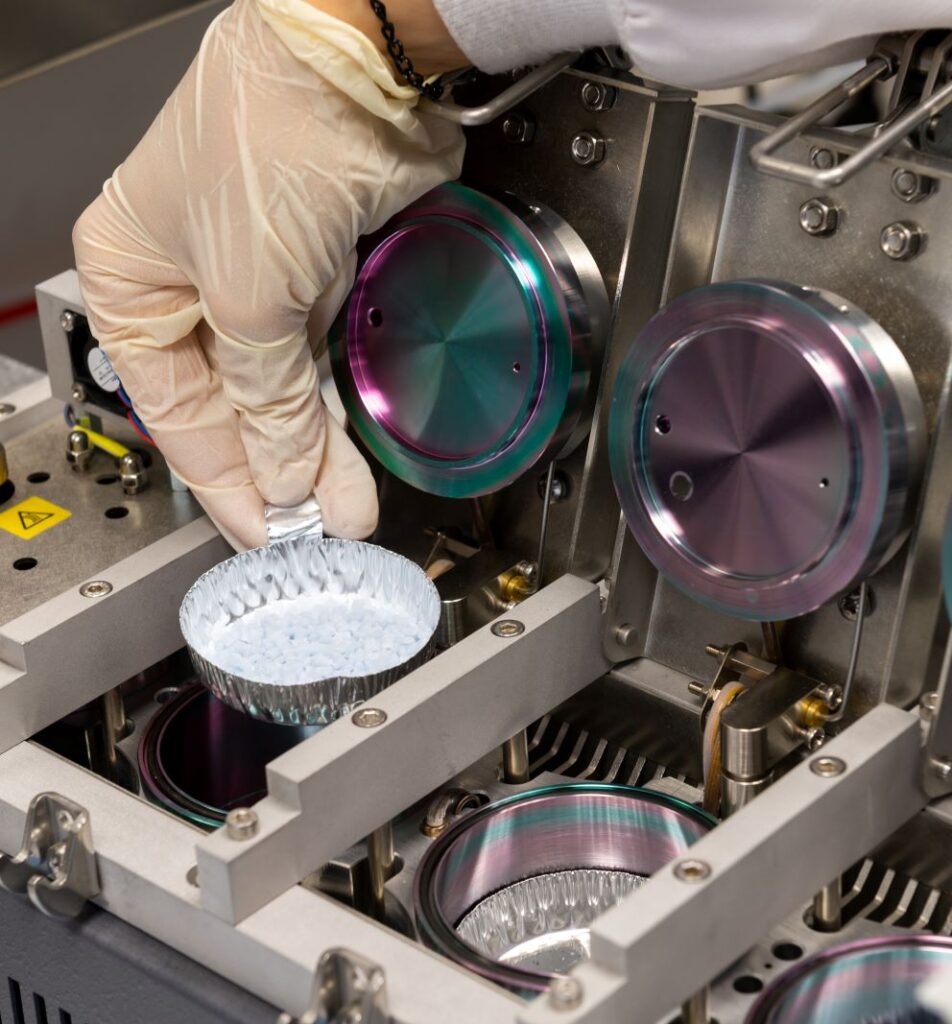Volatile substances content
The term VOC (Volatile Organic Compounds) refers to a wide range of chemicals that affect health and the environment. Every industry needs to be aware of them and limit their emission.
VOCs are substances of organic origin, i.e. they contain carbon and are found in gaseous form in the air. They are generally hydrocarbons that become volatile at room temperature. They are pollutants produced as a result of combustion, the processing of paints, adhesives, petroleum products, pharmaceuticals and refrigerants. This includes emissions from automotive and industrial activity, among others.
VOCs include hydrocarbons, alcohols, aldehydes and organic acids, solvents, liquid fuels, synthetic substances and numerous organic compounds formed in the course of biological processes. Each category has different chemical properties, which gives rise to different problems.
If you need to test for volatile organic compounds, Infinitia Industrial Consulting offers you the possibility to perform VOC analysis with the best professionals and a laboratory equipped with the most accurate technology.
Volatile organic compounds
Volatile organic compounds are generated through incomplete combustion, such as vehicle emissions. They are also associated with industrial processes and are even produced through food preparation.
When solvents or liquid fuels evaporate and liquid or pasty products dry, VOCs are released in large quantities into the surrounding air. For example, one of the causes of VOCs in indoor air is due to products and materials intended for construction and interior decoration such as floor, wall and ceiling coverings, paints, varnishes and adhesives.
However, a less obvious phenomenon is the release of organic compounds that can slowly disperse into the air from the surface of the product and out in a steady stream to its surface.
An example of this can be seen in residual solvents and the basic components of plastics (monomers), excipients such as plasticizers, solubilizers, antioxidants, stabilizers and catalysts in production processes, as well as in substances associated with aromatics, flame retardants and biocides.
Another cause of substance release is found in reaction products, for example, between oxygen, ozone or water and some components of natural substances, such as those found in wood and vegetable oils.


What effects do volatile organic compounds have on our health?
The effects of VOCs on human health can vary depending on the compound, ranging from a high level of toxicity to no known effects. They also depend on the nature of each compound and the period of exposure. However, prolonged exposure to volatile organic compounds can cause damage to the liver, kidneys and central nervous system.
Highly toxic volatile organic compounds include benzene, styrene oxide, trichloroethylene – all of which are carcinogenic – as well as formaldehyde and styrene, which are endocrine disruptors. Likewise, the presence of high concentrations of ozone in the air is very dangerous, as it causes eye and respiratory tract irritation, fatigue, headaches, allergies, reduced lung function, and damage to the liver, kidneys, lungs and central nervous system. For all these reasons, there are regulations that legislate and limit the emission of these substances and it is important to be aware of them since, as we have seen, VOCs affect all industrial sectors.
Legislation and limitation of volatile organic compounds
The aim of European regulations is to limit emissions of volatile organic compounds into the atmosphere. To this end, Directive 2004/42/EC regulating the emission of VOCs prohibits the marketing within the EU of any product that exceeds the maximum permitted value. It therefore establishes mandatory labeling on products indicating the value of these parameters, which may not be exceeded under any circumstances.
However, specific regulations have also been developed for specific sectors, as well as national and international laws that act to reduce emissions and ensure health.

How to eliminate and control VOC emissions?
Nowadays, thanks to technological innovation, it is possible to reduce and eliminate VOC emissions through different air treatments and to comply with VOC regulations. Different techniques can be used to detect the compounds, such as gas chromatography or mass spectrometry to characterize the volatile substances. Here are some effective technologies to reduce VOC emissions:

Filters for air purification
Acetaldehyde is one of the most important air pollutants found naturally in foods such as coffee, bread and ripe fruit. It is a toxic, irritating and carcinogenic substance whose emissions can cause odor problems, especially in commercial kitchens and food processing industries. However, special air purification filters can remove the volatile molecules that cause odor and pollution.
These filters are specially designed to remove and degrade the gases that cause VOC emissions. In addition, their application can be implemented on an industrial scale.


Ozone removal filters
Ozone can be used as a sanitizer and, in fact, its use has increased in recent times to combat indoor COVID-19. However, ozone, apart from being very harmful to health, is also harmful to the ecosystem, as it produces serious effects of water pollution, acidification and plant damage resulting from exposure to O3. For this reason, it is one of the most regulated VOC emissions in Europe. However, thanks to catalytic filters to remove ozone, you can have a safe sanitizing system.
Regardless of the purpose of the air treatment, we offer many solutions to remove VOCs from any type of industry. Put an end to emissions, contact our forensic engineering team to find the best solution.
VOC analysis
As seen in the previous section, there are effective tests for detecting the presence of volatile organic compounds. In the first case named, gas chromatography, reference is made to a technique that separates the components in a chromatographic column, once an inert gas has drawn them there.
As for mass spectrometry, it is a technique that allows the study of the compounds in a sample by separating the atomic nuclei according to their mass-to-charge ratio.
At Infinitia we offer efficient and accurate solutions for volatile organic compounds. Our laboratory, equipped with top quality equipment, will offer you optimal results for your needs.

Contact with us
Contact us for more information or, if you prefer, you can use one of our other technical consultancies with complementary services to boost your project.
